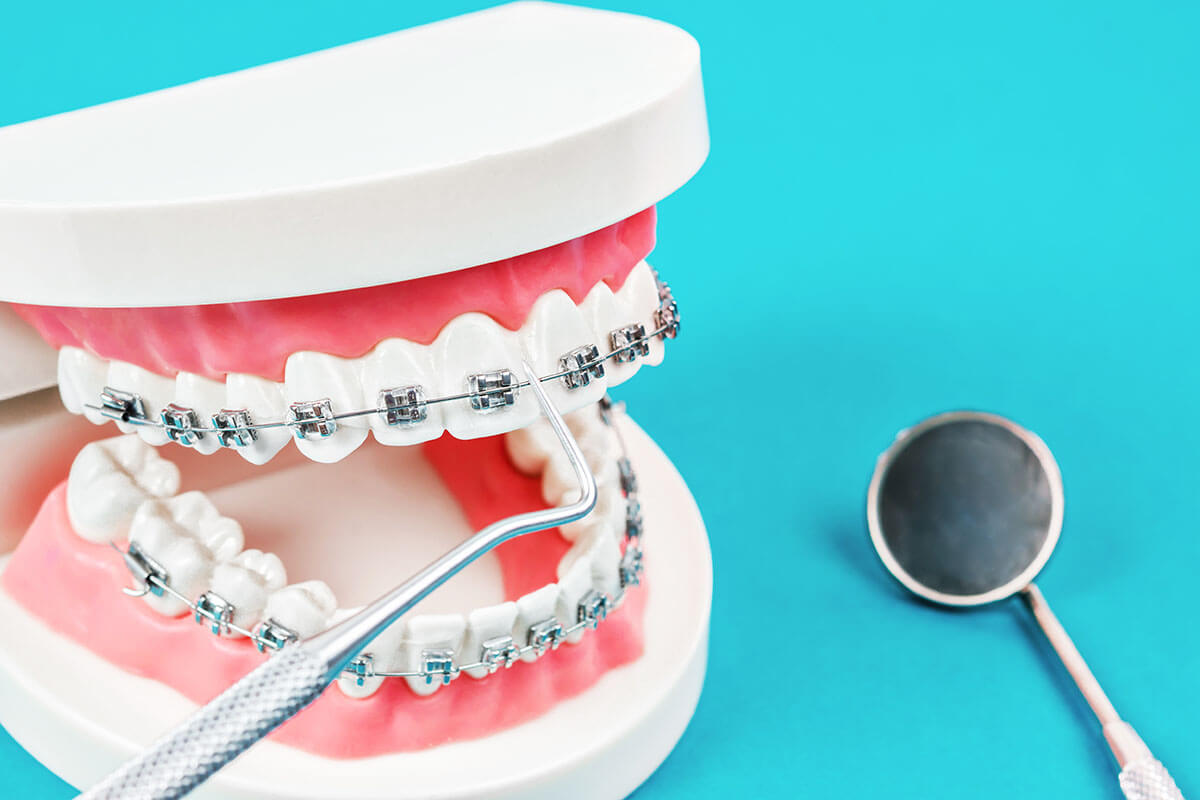How Cumming Orthodontics Can Transform Your Smile with Invisalign and Braces
How Cumming Orthodontics Can Transform Your Smile with Invisalign and Braces
Blog Article
Comprehensive Guide to Orthodontics Treatments for Correcting Oral Imbalances
In the realm of orthodontics, the trip to achieving a flawlessly aligned smile includes a myriad of treatments tailored to fix oral imbalances. From traditional dental braces to invisible aligners and even medical alternatives, the field of orthodontics provides a variety of solutions to attend to differing levels of oral irregularities. Understanding the ins and outs of each procedure, including their mechanisms, benefits, and prospective downsides, is crucial in making informed choices about one's orthodontic treatment. As we navigate with the detailed overview to orthodontic treatments for correcting dental misalignments, the complex information of each technique will certainly unravel, dropping light on the path toward a useful and unified oral positioning.
Orthodontic Procedures Overview

Regular changes and surveillance are vital components of orthodontic therapy to make certain development is on track and to make any essential modifications along the method. By undertaking orthodontic procedures, individuals can not only achieve a straighter grin however likewise improve their total dental wellness and feature.
Traditional Braces: Exactly How They Work
When thinking about orthodontic treatments for oral misalignments, standard braces stand out as a tried and true approach for fixing teeth placing. Typical dental braces consist of brackets, cords, and bands that work together to use constant pressure on the teeth, slowly relocating them into the preferred placement.
One key element of how standard dental braces work is the process of bone renovation. As pressure is put on the teeth via the braces, the bone surrounding the teeth is improved to support the brand-new tooth positions. This improvement is important for the lasting security of the dealt with positioning. Clients will certainly require regular modifications at the orthodontist's workplace to make certain the braces remain to apply the right stress for reliable teeth movement.
Invisible Aligners: Cons and pros
Undetectable aligners use a very discreet and practical option to conventional braces for dealing with oral misalignments. These clear, personalized trays are basically unseen when put on, making them an enticing alternative for people looking for a much more visually pleasing orthodontic treatment. One of the key benefits of unseen aligners is their removability, permitting for less complicated upkeep of oral hygiene contrasted to standard braces. Individuals can eliminate the aligners before consuming or brushing their teeth, decreasing the risk of food obtaining embeded the home appliance and simplifying the cleansing process.

Surgical Orthodontic Options
Surgical treatments in orthodontics existing sensible alternatives for addressing intricate dental misalignments that may not be successfully settled via standard orthodontic therapies. While invisible aligners and traditional dental braces can pop over to this site correct many orthodontic issues, particular instances require medical treatment to attain optimum results. Surgical orthodontic choices are usually suggested for severe malocclusions, significant jaw discrepancies, and instances where the underlying bone framework needs modification to achieve proper alignment.
One usual medical orthodontic procedure is orthognathic surgery, which entails rearranging the jaws to fix functional issues such as trouble talking or chewing. This surgery is often executed in partnership with an orthodontist who aids straighten the teeth before and after the treatment. Surgical orthodontics may also entail procedures to expose influenced teeth, remove excess periodontal tissue, or improve the jawbone to produce an extra unified face account.
Before taking into consideration surgical orthodontic alternatives, individuals undergo a detailed examination to determine the need and prospective advantages of such interventions. braces. While surgical procedure may seem difficult, it can dramatically improve both the feature and aesthetic appeals of the smile in instances where standard orthodontic therapies fail
Retainers and Post-Treatment Care

Failure to comply with post-treatment treatment guidelines can result in regression, where the teeth progressively relocate back in the direction of their original settings. Constant retainer wear, good oral hygiene, and normal oral examinations are necessary for preserving the outcomes accomplished with orthodontic surgery you can try these out and guaranteeing the long-term security of the dealt with oral positioning.
Conclusion
In final thought, orthodontic procedures provide various alternatives for dealing with dental imbalances. Surgical orthodontic options are readily available for much more extreme misalignments. check my site On the whole, orthodontic procedures can properly enhance oral health and wellness and visual appearance.
As we browse through the detailed overview to orthodontic procedures for dealing with dental imbalances, the intricate details of each approach will unfold, losing light on the path toward a practical and unified dental positioning. - cumming orthodontics
One of the most common orthodontic treatments is the usage of dental braces, which consist of metal braces and cords that apply gentle pressure to progressively change teeth into the preferred setting.When taking into consideration orthodontic treatments for oral imbalances, traditional braces stand out as a tried and true approach for correcting teeth positioning. Additionally, undetectable aligners might not be ideal for complex orthodontic issues that need more considerable teeth motion, as they are commonly recommended for mild to moderate situations. Retainers are personalized orthodontic tools made to hold teeth in their corrected positions after the completion of orthodontic treatment.
Report this page